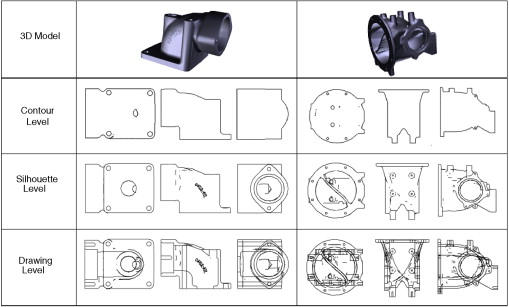Abstract:
3D shape retrieval and clustering is of current interest in several different fields, including mechanical engineering. Several new shape representations for 3D objects are continuing to emerge. Most shape representations are embedded in a variety of feature spaces. However, some of the recently reported shape representations are embedded in arbitrary metric spaces, i.e. distance spaces, rather than in multi dimensional feature space. For such representations, the only operations available on the data objects are distance calculations between the objects. In addition, some of the view-based representations are embedded in non-metric spaces where the representations and the corresponding distances do not follow the triangle inequality. For shape clustering applications, most existing algorithms assume the shape representations either to be embedded in a multi-dimensional feature space or a metric distance space, making it difficult to evaluate several shape representations that do not conform to these assumptions. Therefore, two different approaches were evaluated for using the distance features of a shape to obtain clustering results. In the first method, the original distances are transformed into feature space using a multi-dimensional scaling approach for use with K-means clustering. The second approach directly uses the original distances with a distance-based clustering algorithm. We compared the clustering effectiveness of these two approaches using a classified benchmark database of 3D models. The effect of using different shape descriptors and number of clusters was studied using four measures of clustering effectiveness. Several statistical methods, including the Rand Index and Mutual Information Index, were used to objectively evaluate the clustering efficacy.
Link to Paper:  http://www.sciencedirect.com/science/article/pii/S0010448509001961
Download Paper here


